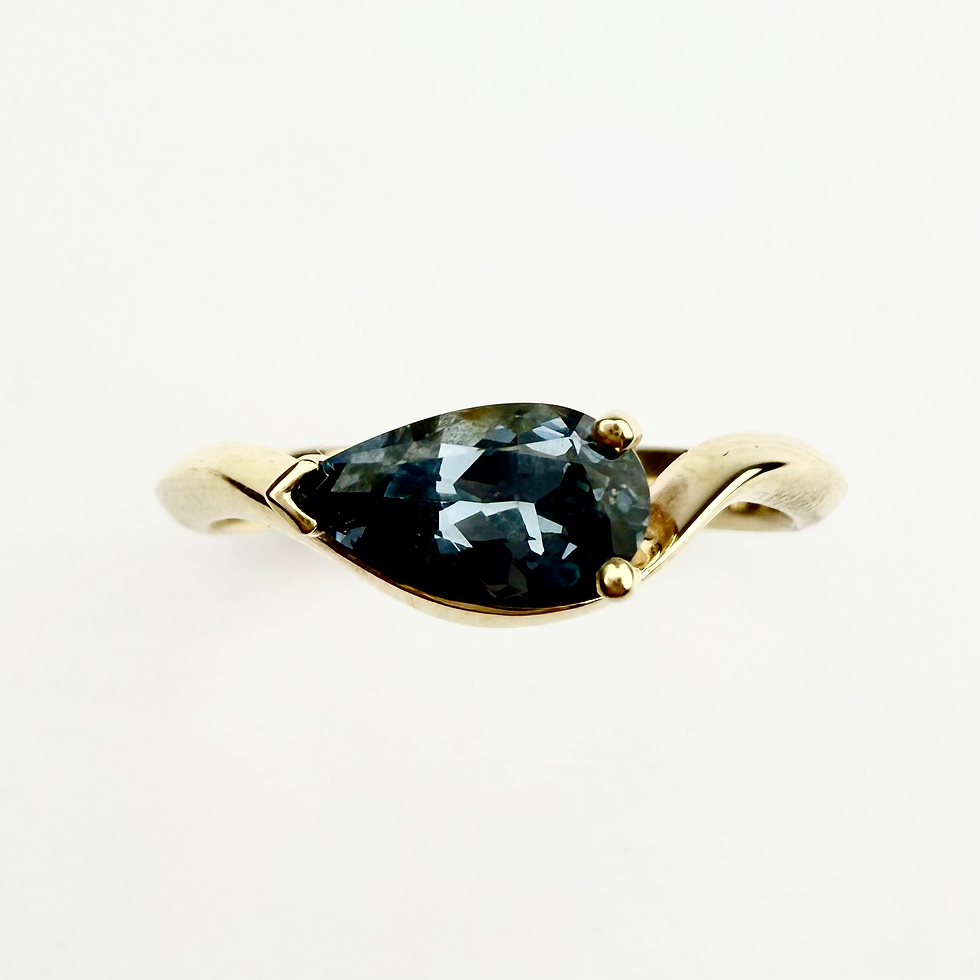Diamonds
At Vu Jewellers we love diamonds and we want our customers to be confident knowing they are buying quality stones. Unless you’ve done a diamond grading course it can be hard to know what you’re looking at – except the fact that it’s something really sparkly. Here’s our guide to understanding the basics behind diamond grading so you’ll know what to look for next time you’re shopping for diamonds.
To understand what grading of diamond you’re buying you need to look at the 4 C’s – carat, colour, clarity and cut.
Diamond Carat
The weight of a diamond is expressed in carats. 1Ct = 0.2grams. Therefore the larger the diamond the higher the carat weight.
In some cases you may be given a total diamond weight for a piece of jewellery. This is when the piece of jewellery has more than 1 diamond for example a pair of diamond earrings or a diamond cluster ring – the total diamond weight (tdw) of both earrings may be 1 carat meaning each stone is around 0.5 carats.
Diamond Colour
Diamonds come in many different colours but for the moment we’re going to be talking about the white diamonds.
The colour of a diamond is graded on a scale from D-Z with D being the highest, whitest grade. Diamonds graded D to F are colourless and more valuable, with D grade being generally sought after by investors. G to H Diamonds are nearly colourless with diamonds colour graded I and J you’ll be able to detect a slight yellow or brown tint. As you descend the scale the diamonds become more tinted.
At Vu Jewellers we stock and design jewellery using diamonds graded D-G.
Diamond Clarity
Diamonds are created underground through enormous heat and pressure so each diamond is unique and natural inclusions and blemishes are inevitable. Diamond clarity assesses the small imperfections on the surface and within the stone. Most inclusions cannot be seen by the naked eye so they don’t affect the diamonds beauty.
Diamond clarity grades are determined by the size, position, brightness and quantity of inclusions and blemishes -
LC / Loupe Clean – a diamond with no internal spots visible when magnified x 10 Loupe Clean
VVS1 – a diamond with Very Very Small Inclusions of 1st degree. Extremely difficult to detect even when magnified x 10 Loupe Clean
VVS2 – a diamond with Very Very Small inclusions of 2nd degree. Extremely difficult to detect magnified x 10 Loupe Clean.
VS1 – a diamond with Very Small inclusions 1st degree. Difficult to detect magnified x 10 Loupe Clean.
VS2 – a diamond with Very Small inclusions 2nd degree. Difficult to detect magnified x 10 Loupe Clean.
Si1 – Diamond with Small Inclusions 1st degree. Eye Clean. Detectable with a loupe magnifying x 10
Si2 / Si3 – Diamond with Small Inclusions 2nd degree and 3rd degree. Detectable by naked eye
I1 / P1 – Diamond with Inclusions 1st degree. Detectable by naked eye. Also named Pique 1
I2 / P2 – Diamond with Inclusions 2nd degree. Visible by naked eye. Also named Pique 2
I3 / P3 – Diamond with Inclusions 3rd degree. Obvious inclusions easily visible by naked eye affecting transparency and brightness. Also named Piqué 3
At Vu Jewellers we use diamonds with clarity of Si and upwards in our handmade jewellery.
Diamond Cut
Often mistaken for the “shape” of the diamond, the cut refers to how well proportioned the dimensions of a diamond and how well positioned the facets are to create sparkle and brilliance. Of the 4 C’s, cut has the greatest influence on a diamonds beauty – if a diamond is cut too deep or shallow the stone can appear dull or glassy. When choosing a diamond the cut should be of highest priority depending on your budget. At Vu jewellers we only use Very Good and Excellent for our handmade jewellery and in fact most of our stones are graded excellent.
The cut of a diamond is categorised as Excellent, Very Good, Good, Fair and Poor
Excellent Cut Diamonds provide the highest level of brilliance and fire. Almost all of the incoming light is reflected through the diamond’s table, therefore the diamond radiates with magnificent sparkle.
Very Good Cut Diamonds have exceptional brilliance and fire. Most of the incoming light reflects through the table. To the naked eye, a Very Good diamonds will provide similar sparkle to those of Excellent grade.
Good Cut Diamonds provide brilliance and sparkle to the naked eye, with much of the light reflecting through the table of the diamond. Good cut diamonds offer brilliance at a lower price point.
Fair Cut Diamonds show little brilliance, as light easily exits through the bottom and sides of the diamond. Fair Cut diamonds are often chosen for smaller carats and those positioned as side stones.
Poor Cut Diamonds have little to no sparkle, brilliance or fire. Entering light escapes from the sides and bottom of the diamond.
Diamond Shape
As well as the classic round diamond there are a number of other popular shapes, each adding unique style to different pieces of jewellery. Different shapes reflect light differently giving each shape its own fire and brilliance.
Popular diamond shapes include Brilliant Round, Emerald, Radiant and Oval.
We hope that you find this information about diamond grading useful when choosing your next piece of diamond jewellery. At Vu we have a great selection of diamonds available for custom made jewellery so pop in and see us if you have something sparkly in mind.



































